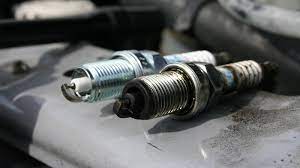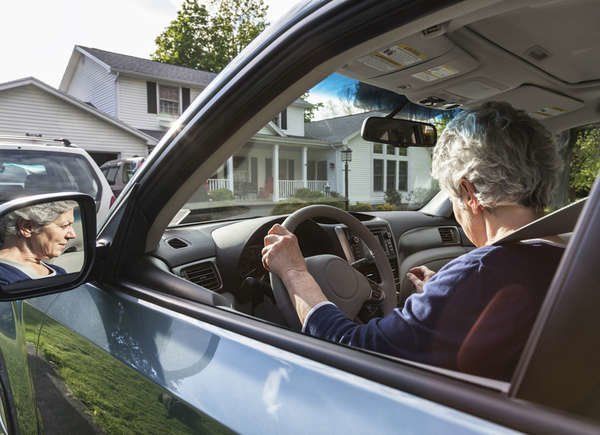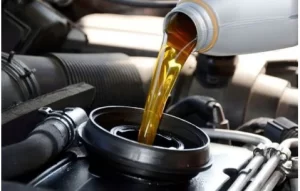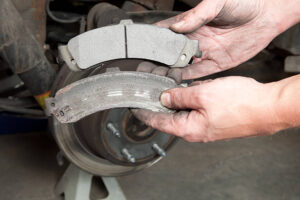
THE LAND ROVER SERIES I
Maurice Wilks built the prototype of the Center Steer, which has the steering wheel at the center of the dashboard. It was built on an American Willys Jeep chassis with hand-built bodywork.
As surplus paint was not available for the production of warplanes, the first units that came off the assembly line were painted with different shades of military green.
The Land Rover Series I was powered by four-cylinder petrol and four-cylinder diesel engines that produced around 50 horsepower. They were mated with a Rover P3 four-speed transmission. This was further enhanced by a two-speed transfer box and an innovative four-wheel-drive system that was used on many Rover cars at the time.
LAND ROVER SERIES II
Ten years later, Series II, the first Land Rover update, arrived. It featured a striking design with stylized flanks, rounded fenders and a basic style that would last for decades. Series II was the first Land Rover with its famous 2.25-liter petrol engine that produced 72 horsepower.
IIA LAND ROVER SERIES
1962 saw the introduction of the Series IIA. Although visually similar to the Series IIA, it had a completely different personality due to its 2.25-liter diesel engine. The Series II received a new 2.6-liter gasoline motor in 1967. In 1968, the headlights moved to the front of the fenders. The Series IIA’s power ranged from 63 to 69 horsepower.
LAND ROVER SERIES III
1971 saw the introduction of the Land Rover Series III. The compression ratios of the engines, decorative details and differences in the interiors made it difficult to distinguish Series III from later Series IIA models. Due to growing safety concerns, Land Rover interiors were extensively redesigned in 1970 to accommodate padded plastics.
The first V8 engine was introduced in 1979 with a 3.5-liter displacement unit. The permanent four-wheel-drive system of the Land Rover Series III V8, also known as Stage 1, was included in the Series III V8.
DEFENDER NAMEPLATE
In 1990, Land Rover adopted the Defender nameplate for its line. This ended any confusion about whether Land Rover was a brand or a model. Land Rover offered the Defender three wheelbase options: 90-inch (110-inch), 130-inch and 130 inches.
A 2.5-liter 200 turbo diesel engine initially powered the Defender. Later, it was replaced by a five-cylinder Td5 diesel motor in 1998.
In the 2000s, the four-cylinder 122 horsepower ‘Puma’ diesel engine was standard. It was joined by a six-speed manual transmission, a modern dashboard, and safety features. The 2.4-liter version was replaced by a smaller, 2.2-liter engine in 2012.
After a continuous run for 67 years, the Land Rover Defender was finally retired. It was the vehicle of choice for Winston Churchill and Queen Elizabeth II. Many people across the British Commonwealth love the country, but it couldn’t adapt to modern automotive standards.
THE NATURAL HABITAT OF THE DEFENDER
Many enthusiasts consider the Land Rover Defender to be the best 4×4 available. Many Defender owners love to return their Defender to its natural environment and give it the toughest 4×4 tests.
The Defender can also be used as an Overlanding vehicle. The Land Rover Defender is a popular vehicle in Overlanding, alongside the Jeep and some Toyota offroad models.
CUSTOMIZING A CLASSIC DEFENDER
The Land Rover Defender is a classic vehicle with a rich history and purpose. It can also be customized to make it even more special. Trust only the best if you want to customize or restore your Defender and make it an off-road wonder.
ECD Automotive Design can completely restore or customize your Defender or Range Rover classic, adding modern touches. What can ECD do for your Range Rover or Defender?
A NEW ERA FOR THE DEFENDER
This British automotive icon has been around for many decades, but there have not been any significant changes. It was transformed into a new generation that is more capable than ever.
After three years of suspense, Jaguar Land Rover unveiled a new generation of Land Rover Defenders in late 2019. The iconic silhouette is unchanged, but it has been redesigned. It is rugged yet elegant. The comparisons between the new Defender and the older Defender were not too long in coming. They are both similar in style and capabilities. Regardless of which one wins, both are icons.
Land Rover has abandoned the body-on-chassis tradition for the Defender and moved to integrated bodywork. The all-round independent suspension replaced the rigid axles. There are now only two wheelbase lengths available and closed SUV bodies.
The Defender’s base powertrain, the P300, features a 296-hp turbocharged 2.0-liter four-cylinder and an optional P400 engine (turbocharged supercharged) inline-six with 48-volt hybrid assistance. It produces 395 horsepower and 406 lb-ft.
The Land Rover Defender is a pioneering vehicle that has been cherished by explorers, humanitarians, as well as families who are passionate about adventure. It has been around for seven decades. This legacy is being carried on by the new Land Rover Defender, which boasts proven capability in harsh environments and unmatched luxury and refinement.

















